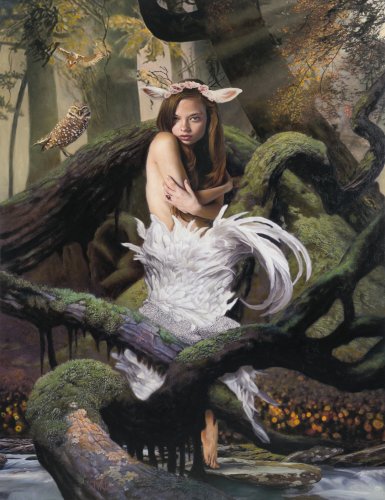New Brow
The Diary: Early people discovered that the systematic progression of the seasons was matched to
the rhythmic motions of the heavens, and that the sky was a far more accurate indicator
of these cycles than making systematic observations of the weather. People realized
that the movement of the sun across the sky could fix the day and its divisions, while the
changing phases of the moon established the month (moonth in Olde English)
By observing the rising or setting of a specific star when near the sun the year could be
defined. And, because there were seven objects which moved against the starry
background; five planets, the moon, and the sun, the popular notion of the week came to
fore. Ancient cultures did not understand the true physical nature of these seven
wanderers in the heavens, so it was only natural to deify them and to closely monitor
their changing positions. Those individuals who became proficient in these tasks were
able to wield enormous power with the populace and ruling infrastructures; so much so,
that they were venerated as priests and allowed to exist as a separate, almost untouchable segment of society. They designed temples with astronomical alignments to track the extreme
positions of the sun and the moon. In a sense, these structures acted as permanent calendars. Eventually, in the Middle East, a complex series of rules were devised to relate this celestial
dance as an indicator of human destiny. Astrology with its many different types of horoscopes was a direct result of this synthesis.
Many ancient societies, tied closely to their land, did possess notions of time, even if their ideas were not articulated or formalized in theories. The ancient Egyptians, for instance, were
intimately familiar with the cycles of the seasons and the fluctuations in climate and tides; the mighty Nile River cut through their territory and it was the Nile upon which they depended for
sustenance and commerce. Everything depended on the Nile - from making the determination of when to plant and harvest crops to scheduling the appropriate moment for installing a new
pharaoh, the ancient Egyptians rendered their most important decisions by looking to such aspects of the environment as when the river rose and when its waters fell. There were patterns to be discerned in these environmental elements, and the ancient Egyptians began to develop a concept of time based on this succession of recurring phases, which today, of course, our
culture refers to as the seasons.
We've been taught that time and space exist. They're real. And that reality has been reinforced everyday of our life - every time we go from here to there, every time we reach for something,
every month we pay the bills. Most of us live without thinking abstractly about time and space. Time and space are such an integral part of our lives that their examination is as unnatural as
scrutinizing breathing. The question "Does time exist?" can make a person wonder about taking the time to ponder such philosophical babble. A reply might be, "The clock ticks. The years
pass. We age and die. Time is the only thing we can be certain of." Equally inconsonant is the question of whether or not space exists. "Obviously space exists," we might answer. "Because
we live in it. We move through it, drive through it, build in it." It's the "when, what, where" scenario: ten o'clock, coffee, Starbucks on Main. Time and space in the concrete sense are easy to
talk and think about. But the idea that time and space are tools of the mind, our source of comprehension and consciousness, is an abstraction. Our day-to-day experiences have indicated
nothing of this reality to us. Rather, our life has taught us that they are external realities. They bind all experiences. Yet we all instinctively know that space and time aren't things - the kind of
objects you can see, feel, or smell.
In the Oct. 2010 issue of Discover, theoretical physicists Stephen Hawking and Leonard Mlodinow state, “There is no way to remove the observer – us – from our perceptions of the world.
In classical physics, the past is assumed to exist as a definite series of events, but according to quantum physics, the past, like the future, is indefinite and exists only as a spectrum of possibilities”.
Immortality doesn’t mean perpetual (linear) existence in time but resides outside of time altogether. Life is a journey that transcends our classical way of thinking. Experiment after experiment continues to suggest that we create time, not the other way around. Without consciousness, space and time are nothing. At death, there’s a break in the continuity of space and time; you can take any time – past or future – as your new frame of reference and estimate all potentialities relative to it. In the end, even Einstein acknowledged that “the distinction between past, present and future is only a stubbornly persistent illusion.” Life is just one fragment of time, one brushstroke in a picture larger than ourselves, eternal even when we die. This is the indispensable prelude to immortality. Contact us now to add this prolific artist to your collection at 505.820.0788 or by email to Sharla@popsantafe.com.
|





 Next Work
Next Work Prev. Work
Prev. Work Thumbnails
Thumbnails Artist Bio
Artist Bio Email Page
Email Page